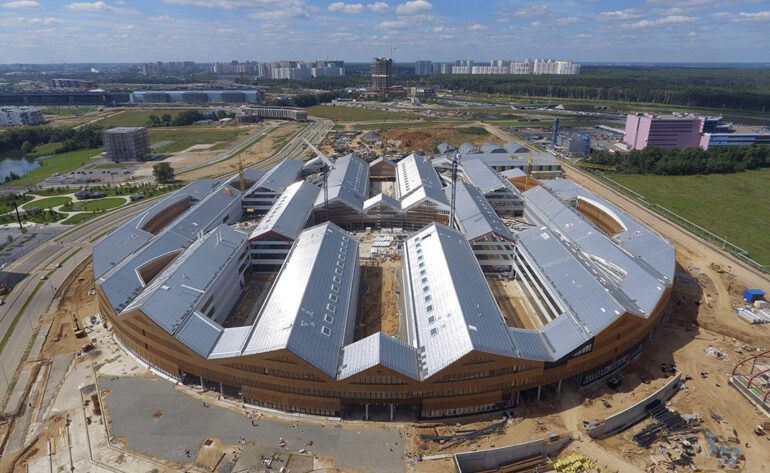TL;DR:
- Researchers from Skoltech and AIRI have developed an algorithm for optimal data transfer between domains using neural networks.
- The algorithm utilizes the theoretical underpinnings of optimal transport and neural networks to achieve superior results.
- Unlike traditional methods, the algorithm can be trained on separate datasets from the input and output domains.
- It enhances interpretability and offers more control over the variety of generated samples.
- The approach aligns probability distributions, improving models in various domains beyond unpaired translation.
- The algorithm outperforms state-of-the-art methods in picture styling and other tasks, requiring fewer hyperparameters.
Main AI News:
In recent years, the field of machine learning has witnessed a growing adoption of neural networks to tackle optimum transport (OT) challenges, thanks to the emergence of large-scale OT and Wasserstein GANs. These neural networks have proven to be effective generative models, delivering comparable performance in real-world tasks. The key to their success lies in utilizing the OT cost as a loss function to update the generator in generative models.
Now, a groundbreaking collaboration between the Artificial Intelligence Research Institute (AIRI) and Skoltech has yielded a novel algorithm that takes information sharing across disciplines to new heights using neural networks. Unlike traditional approaches that require coupled training datasets with input-output examples, this cutting-edge method can be trained on separate datasets from both the input and output domains. The theoretical foundation of the algorithm enhances its output interpretability, distinguishing it from competing methods.
The significance of this breakthrough cannot be overstated, especially considering the challenges posed by acquiring large training datasets in modern machine learning. These datasets are indispensable for developing advanced models used in applications such as face or speech recognition and medical image analysis. However, due to their scarcity, scientists and engineers often resort to artificial means of simulating real-world datasets. Fortunately, recent advancements in generative models have greatly facilitated this process, substantially improving the quality of generated text and images.
Generative models teach neural networks to generalize and extend their capabilities beyond paired training samples and input-output picture sets, making them ideal for handling large volumes of similar images with varying quality. Put simply, generative models enable seamless transitions between domains by synthesizing data from diverse sources. For instance, a neural network can transform a hand-drawn sketch into a digital image or enhance the clarity of a satellite photograph.
What sets this novel algorithm apart is its unique utilization of deterministic and stochastic transport maps to align probability distributions. While this technology is a general tool, its application in aligning distributions opens up new possibilities beyond unpaired translation, such as picture restoration and domain adaptability. Moreover, this approach provides researchers with greater control over the level of variety in generated samples and improves the interpretability of the learned map compared to conventional methods relying on GANs or diffusion models. However, it should be noted that for unpaired activities, the acquired OT maps might require revisions, highlighting transportation cost design as a potential area of further study.
At the core of this innovative approach lies the intersection of optimum transport and generative learning. Fields like entertainment, design, computer graphics, and rendering heavily rely on generative models and efficient transport, making them prime candidates for adopting this approach. However, it is important to consider that the utilization of such tools could impact certain professions within the graphics industry, as it makes image processing technologies more accessible to the public.
Researchers often face the challenge of working with unrelated datasets instead of ideal matched data due to its exorbitant cost or difficulties in acquisition. To overcome this hurdle, the team turned to the works of Soviet mathematician and economist Leonid Kantorovich, drawing inspiration from his optimal transport theory, which focuses on efficient cargo transportation. Leveraging deep neural networks and separate datasets, they developed Neural Optimal Transport, a groundbreaking approach that revolutionizes planning for optimal data transfer between domains.
When put to the test in unpaired domain transfer scenarios, the algorithm outperformed state-of-the-art approaches in picture styling and various other tasks. Additionally, it boasts the advantage of requiring fewer hyperparameters, which are typically challenging to fine-tune. The algorithm’s interpretability is also enhanced, thanks to its strong mathematical foundation, setting it apart from its competitors.
Conclusion:
The development of this novel algorithm for optimal data transfer between domains using neural networks has significant implications for the market. Its ability to train on separate datasets and enhance interpretability opens new possibilities for industries such as entertainment, design, computer graphics, and rendering. The algorithm’s superior performance and reduced dependency on hyperparameters make it an attractive choice for businesses seeking efficient and reliable information sharing. With the potential to revolutionize data transfer and enhance model performance, this breakthrough algorithm paves the way for transformative advancements in various sectors. Companies that embrace this technology stand to gain a competitive edge by leveraging the power of neural networks and optimal transport theory for improved results in their respective domains.

